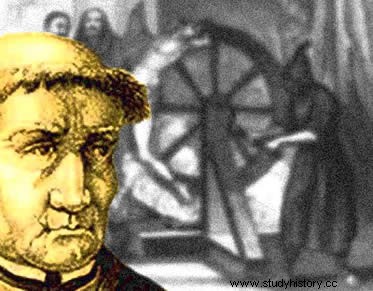
By Rainer Sousa
In the Late Middle Ages and in the Modern period, the Catholic Inquisition was an artifice used by the Church to oppose the people who threatened Catholic hegemony. Through processes, people were arrested, interrogated, punished and, in extreme cases, thrown to death at the stake. From the Catholic point of view, persecution was fundamental so that heresies, Judaism and witchcraft did not dismantle Christianity in Europe.
Torture was judged as a necessary form of confession. Possession of a demon was the most common justification for the interrogated not to admit the nature of the crimes he committed. Thus, torture was used as a way of attesting the guilt or innocence of the accused. Inquisitorial torture could end up being an instrument of intimidation, but it cannot be interpreted as having this sole purpose.
One of the most fearsome representatives of the Inquisition was Tomás de Torquemada, a Spanish Dominican friar. Appointed as an inquisitor by Pope Innocent VIII and honored by Queen Isabella of Castile, this cleric promoted a fierce hunt against bigamists, moneylenders, Jews, homosexuals, witches and heretics. His fierce performance ended up making his fame travel to the four corners of Spain and even reach the ears of the Vatican itself.
Usually, based on allegations of weak support, those investigated were arrested and subjected to interrogation in the Inquisition's dungeons. While the floggings and tortures were unleashed, Torquemada passed the time whispering his prayers. According to some documents, those questioned had their fingernails ripped out, their skin marked with red-hot irons and their fingers pierced. Women accused of witchcraft were stripped so that tattoos of devilish symbols could be found.
Throughout a lifetime dedicated to this type of activity, Torquemada ended up being viewed with suspicion by the religious leaders of the time. According to estimates, through their investigative methods, around 10,000 people would have been condemned to the stake. After ignoring the Church's requests for moderation, he was eventually removed from his duties. Four years later, in 1494, he ended up dying in the cloister of a convent in the region of Ávila.
